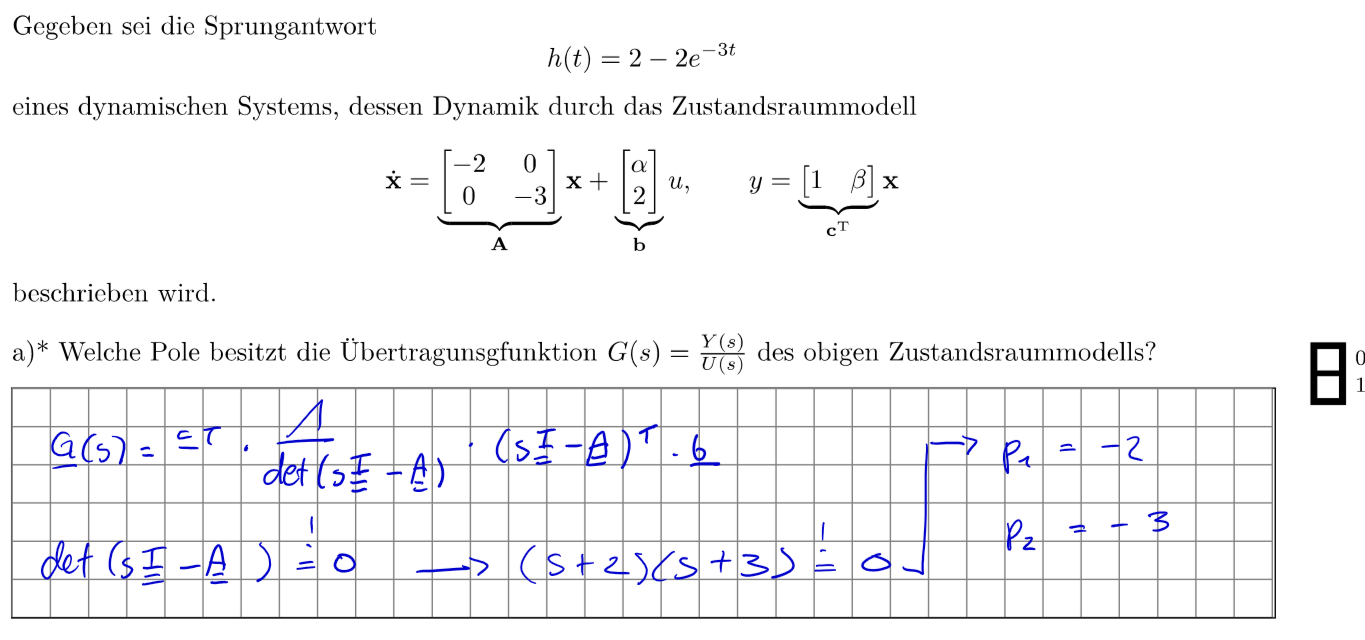I have a question regarding the poles of a transfer function given a state space diagram. There is a formula for it. This is my answer:
Unfortunately, the answer is apparently long. The answer says that the pole of the transfer function G(s) is located at -3. So it doesn't mention the -2.
Anyone know where I went wrong?
Translation of question :
Given is the step response h(t) of a dynamic system whose dynamics are described by the state space model. Which poles does the transfer function G(s) = Y(s) / U(s) have?
